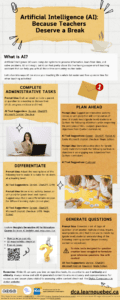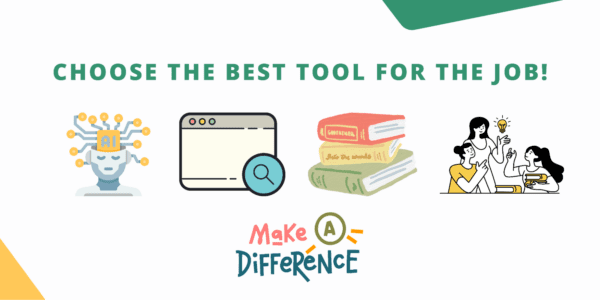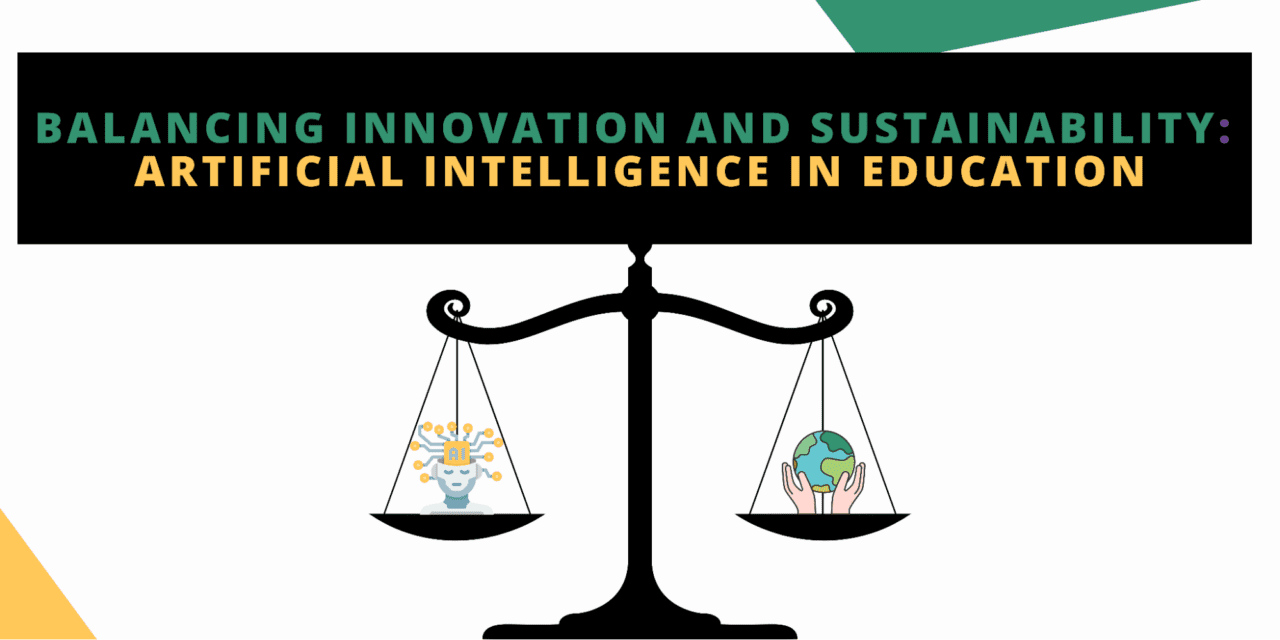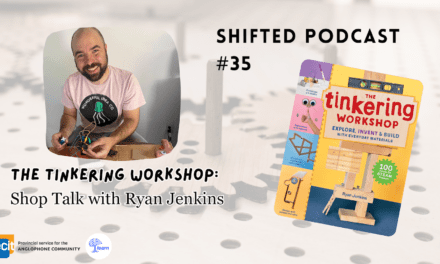Rapid advancements in Artificial intelligence (AI) have taken the education world by storm. AI allows us to easily perform mundane, repetitive tasks quickly and efficiently. It can be handy for differentiating texts, developing question sets, and helping plan activities. We’ve tested different tools and created an AI infographic to post near our desks to encourage us to work smarter- not harder- using AI as our super-smart teaching assistant.
 More recently, though, our team has become more conscious of the environmental impacts of artificial intelligence systems. While we always enjoy exploring and keeping up with innovative technological tools, the Sustainable Development Goals are also a priority to our team. While AI offers numerous benefits, teachers and students must learn and acknowledge the environmental footprint of AI systems. Understanding the energy and data implications of AI is essential for making informed decisions about its use in education and our personal lives. Plus, critically thinking about the environmental impacts of these systems is undoubtedly part of digital competency, which all educators should work to develop in themselves and their students!
More recently, though, our team has become more conscious of the environmental impacts of artificial intelligence systems. While we always enjoy exploring and keeping up with innovative technological tools, the Sustainable Development Goals are also a priority to our team. While AI offers numerous benefits, teachers and students must learn and acknowledge the environmental footprint of AI systems. Understanding the energy and data implications of AI is essential for making informed decisions about its use in education and our personal lives. Plus, critically thinking about the environmental impacts of these systems is undoubtedly part of digital competency, which all educators should work to develop in themselves and their students!
So, what are some of AI’s impacts on the environment?

1. AI data centers take large amounts of energy to process and regulate the temperature of digital devices. Image by Brian Penny from Pixabay
Well, some of the points mentioned in the UN Environment Programme’s Sept. 2024 article include:
- Data centers housing AI servers consume significant energy, water, and resources. Data centers often rely on fossil fuels, contributing to greenhouse gas emissions.
- AI hardware contributes to electronic waste, often containing hazardous materials. Data storage often requires physical infrastructure, which also has environmental impacts.
- The production of AI components requires rare earth elements, often mined unsustainably.
The UN Environment Programme’s Sept. 2024 article also mentions a few environmental benefits of AI, such as helping to identify patterns and anomalies in data to monitor environmental changes.
Where does this leave us?
While AI can be a valuable tool, it’s essential to consider the pros and cons of when and how it is used. For example, asking AI to perform a task tends to have a more significant environmental impact than a traditional online search. Let’s build a culture of balancing innovation and sustainability while searching online. Conventional search engines are often more efficient in energy consumption for basic questions or quick facts. However, AI can be useful for more complex tasks, such as generating creative content or analyzing large datasets. It has a potentially higher environmental cost, but you can ask it to perform multiple searches or computations simultaneously, which could be simpler than 20 traditional searches. As my dad often says, it is important to choose the best tool for the job. That quote applies as much to hardware tools as it does digital ones!

In addition to weighing the pros and cons before jumping online yourself, students need to explore the environmental impacts of AI. Although students are not permitted to use generative AI in schools in Québec, some undoubtedly do so at home or will when they are older. Here are some curriculum-connected ideas for activities to explore AI without students actually using it:
In social sciences and science: Discuss the concept of energy production and efficiency. Explore how different devices consume energy. Have students research the energy consumption of various electronic devices, including computers, smartphones, and servers.
In math: Discuss what data is. Introduce the concept of data centers and the role of data in AI systems. Discuss the environmental impacts and ethics of data collection and centers.
In art: Create ‘digital footprint’ art pieces inspired by nature, technology and issues related to sustainability. Students can incorporate symbols related to their online activities, energy usage, and ways to reduce their digital footprint.
In languages: Divide students into groups and assign them roles such as an AI chatbot, an environmental scientist, a government official, a concerned citizen, etc. Students analyze a text on AI’s ecological impacts. They make a skit or other written or oral production to discuss the challenges and opportunities.
By understanding the environmental impacts of AI and incorporating activities to explore these issues, we can empower ourselves and our students to become responsible digital citizens and make informed decisions about technology use.
References
1.Penny, B. (n.d.). Ai Generated Cloud Computing Mining royalty-free stock illustration. Free for use & download. Pixabay. Retrieved from https://pixabay.com/illustrations/ai-generated-cloud-computing-mining-8533600/.





